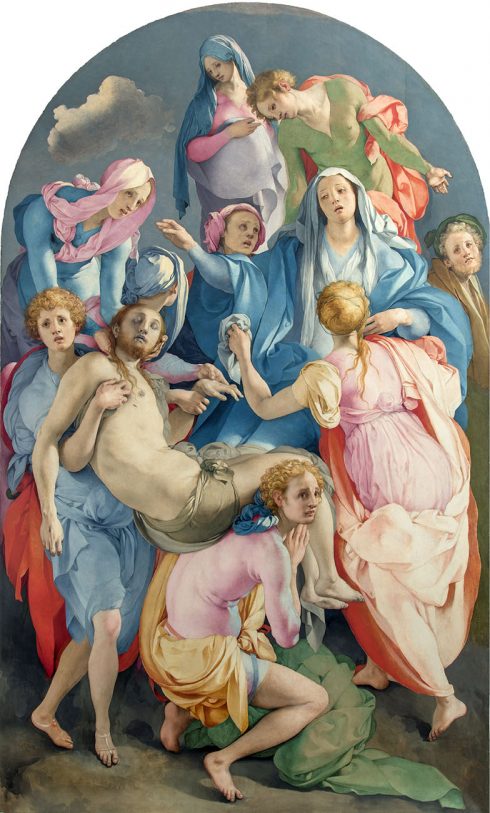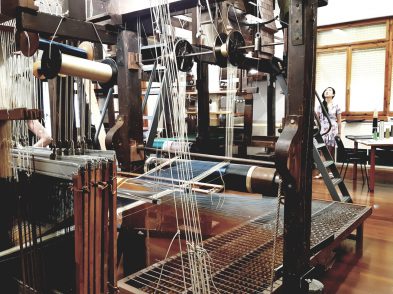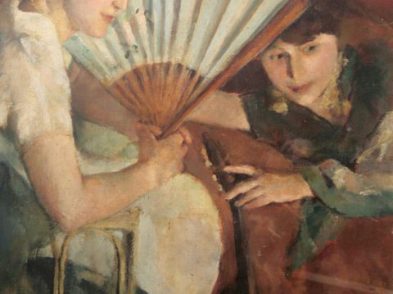To show his influence, fifteenth-century banker Filippo Strozzi commissioned a palazzo designed to be bigger and grander than any of the Medici palaces. Today, this three-story cubic building in pietra forte hosts three art shows a year that span all periods and genres. Palazzo Strozzi is the largest temporary exhibition space in Florence and until January 21, 2018 it will showcase the city’s “glory days” with a must-see exhibition: “The Cinquecento in Florence: From Michelangelo and Pontormo to Giambologna”.
Pontormo’s Deposition
One of my favorite ways to prepare for viewing an exhibition is to go through the list of artists featured and then imagine the one I would most like to take me through it. Forty-one names—all of Florence’s biggest art heroes come up here and some may wonder: Would know-it-all Giorgio Vasari, as Italy’s first art historian, be the best one to play guide or would Bronzino be preferable with his acute eye for detail? Or is the obvious choice Andrea del Sarto, a Medici favorite, known as “the flawless painter”? For me, the choice is more than clear: the guide I would choose, without a doubt, would be Jacopo Pontormo.
Pontormo was an odd duck, a melancholy man, who lived alone in a room with a loft, which he reached using a ladder he would pull up behind him so no one could bother him. He kept a diary of his every thought, what he ate, his every ache and pain, and even his bowel movements. He was as eccentric as he was brilliant. The crouching, curly-headed boy that stares at us wide-eyed from Strozzi’s latest exhibition poster was authored by Pontormo. He looks out at the viewer from the bottom of the master’s mesmerizing Deposition (1525-28), one of the show’s centerpieces and a singular example of Florentine Mannerism.
Pontormo’s elongated, grieving figures, mainly wearing hot pinks and cool blues, seem almost intertwined and “floating” around the dead Christ. The Virgin, shown in an unusual pose, looks as if she is on the verge of fainting. There is no cross, as found in previous Depositions, and only a single, fluffy stray cloud denotes that the figures are outside. This expressive work so filled with jarring colors and brilliant contrasts was created for the Capponi Chapel in Santa Felicita Church. In the three years it took Pontormo to finish the work he prevented all access to the chapel because it was such a departure from the style of his time. Pontormo’s self-portrait, the bearded man in the background of this work, can be found in the middle on the right-hand side. He gazes out at the viewer removed from everything going on around him and he seems lost in his own world.
The artist is not the only one in the room who appears slightly dazed. All of Strozzi’s visitors look much the same way. Displayed with Rosso Fiorentino’s and Bronzino’s Depositions (from Volterra and France respectively), there’s no way to avoid feeling starstruck. These art giants “meet” for the first time ever and, in a word, we are dwarfed by them.
Overall, the show highlights the development of Mannerism, a complex yet refined theatrical art style of the late sixteenth century. Artists who worked during this period, which stretched between High Renaissance and the Baroque, rejected Renaissance balance and harmony, creating works that reflected the social, religious and scientific upheaval of the time. Michelangelo was a point of reference par excellence and viewing his River God within this exhibition makes this well-known fact all the more justified. Though the dissatisfied Michelangelo left the marble-like model unfinished, abandoning the piece in San Lorenzo’s New Sacristy, art lovers today cannot help but stand in front of it transfixed. Its recent three-year restoration by the Friends of Florence makes it all the more intriguing now that the non-original bronze coating and environmental build-up have been removed.
In an almost overwhelming display of artistic prowess, this exhibition includes 70 works, many of which are usually in off-the-beaten-track churches or private collections. It is the final “hurrah” of a trilogy of exhibitions curated by Carlo Falciani (author and lecturer) and Antonio Natali (the Uffizi Gallery’s former director), which began with Bronzino in 2010, followed by Pontormo and Rosso Fiorentino in 2014. If you are tempted to scout out just a few of the highlights, my suggestion would be to look for each of the 19 works that were restored for the occasion, such as Bronzino’s Immaculate Conception, Allori’s Christ and the Adulteress and Del Sarto’s Pietà with Saints. Producing art has always been so closely linked to Florence’s identity. Protecting art from decay is part of that same unique vocation, and exhibitions like this one serve as a worthy reminder. Go, see and leave reassured that Florence is indeed Florence!
The Cinquecento in Florence: From Michelangelo and Pontormo to Giambologna
Palazzo Strozzi, piazza Strozzi, Florence
Until January 21, 2018
Open daily 10am-8pm, Thursdays 10am-11pm









